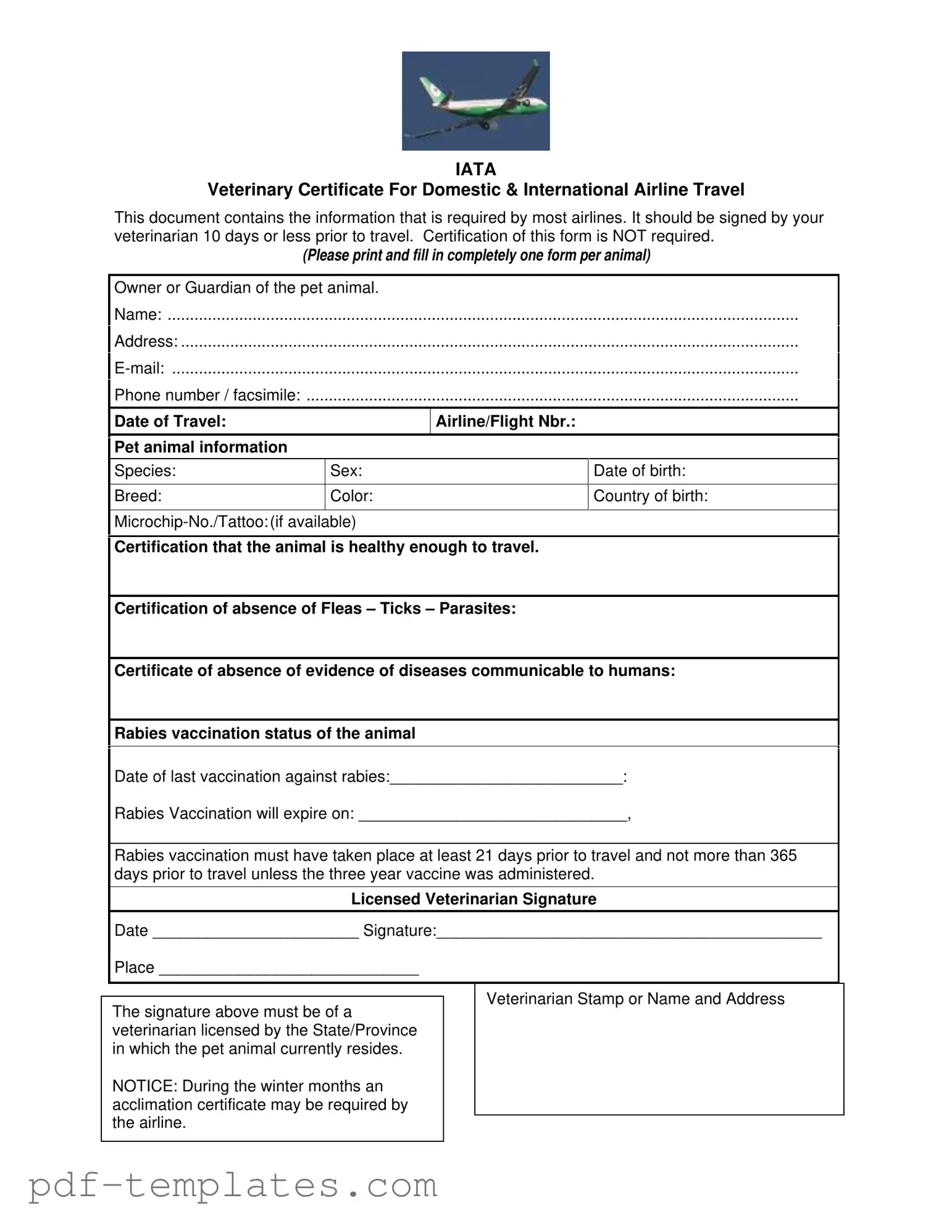When planning to travel with your pet, the Veterinary Certificate Travel form plays a crucial role in ensuring a smooth journey. This document is essential for both domestic and international airline travel, as it contains vital information required by most airlines. To be valid, the form must be signed by a licensed veterinarian within ten days of your travel date. It is important to note that while the certification of this form is not mandatory, completing it accurately is necessary for each animal traveling. The form requires detailed information about the pet, including the owner's contact details, the date of travel, and specifics about the animal such as species, breed, and vaccination status. Notably, the form also includes certifications regarding the animal's health, absence of fleas or parasites, and rabies vaccination status. Rabies vaccinations must have been administered at least 21 days before travel and cannot be older than one year unless a three-year vaccine was given. Additionally, during winter months, airlines may require an acclimation certificate, so it's wise to check ahead. Completing the Veterinary Certificate Travel form ensures that your furry friend meets all airline requirements, making your travel experience as stress-free as possible.
